
Best Plants for Rooftop Gardening
Posted by Grange Co-op on 11th Jan 2022
Rooftop gardening, or 'green roofs' is one of the most visually appealing and fulfilling ways of utilizing a vacant roof space. Although you can’t grow everything on it, city dwellers living in high rises, don't be discouraged, urban gardening is attainable!
There are many plants available at your local Grange Co-op that is suitable for this type of roof gardening. When choosing plants for your rooftop, there are a few things to consider, such as the size of the terrace, weather exposure, sunshine availability and seasonal preferences in contrast to the plants you wish to grow.
Depending on these factors, some great options we recommend for your rooftop garden include:
- Hostas
- Lavender
- Kousa Dogwood
- Single seed Juniper
- Fanal
- Daylily
- Dwarf Hinoki Cypress
- Ajuga
- Lamb's-Ears
- Honeysuckle
- Blue Fescue
- Japanese Wisteria
Rooftop Gardening Soil and Plants
For rooftop gardening, we highly recommend using large containers such as raised beds andpots for growing plants. Large containers will allow your plants to grow big and strong, limiting the chance of them becoming rootbound and unhealthy.
It is equally important to fill your potting containers with organic soil in order to provide your plants with the nutrients needed to thrive. To launch your gardening endeavors on the right foot, Grange Co-op recommends
G&B Organics Raised Bed and Potting Soil. 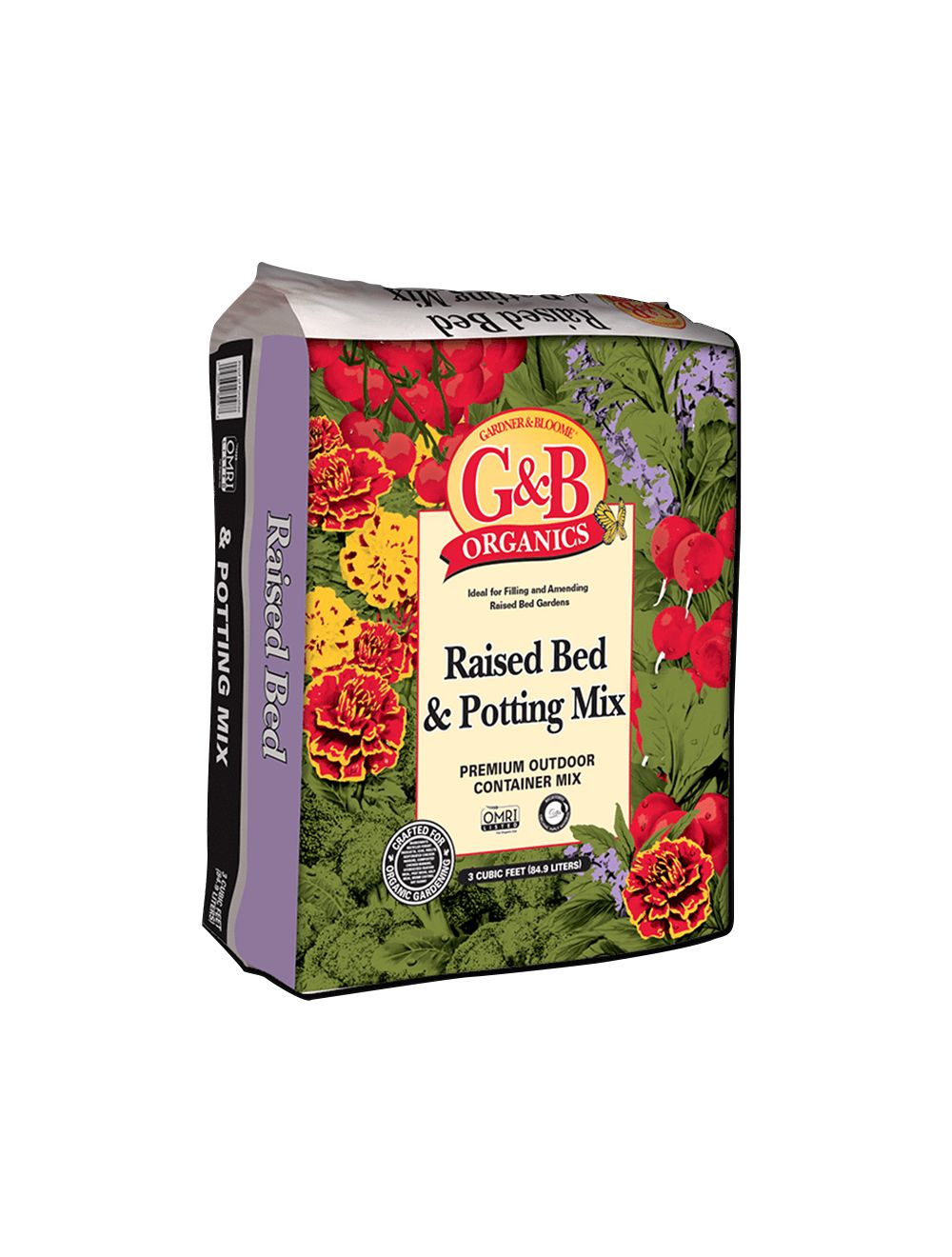 This ready-to-use gardening soil is specifically designed for large pots and raised bed gardens. No mixing is needed as the soil directly contains organic fertilizers and added coir for greater moisture retention. G&B Raised Bed and Potting Soil allow plants to grow freely and receive a healthy supply of nutrients, moisture, and space for root growth.
This ready-to-use gardening soil is specifically designed for large pots and raised bed gardens. No mixing is needed as the soil directly contains organic fertilizers and added coir for greater moisture retention. G&B Raised Bed and Potting Soil allow plants to grow freely and receive a healthy supply of nutrients, moisture, and space for root growth.
Here is a short overview of our top plant recommendations for rooftop gardening:
1. Hostas
If you have covered spaces on your roof, resulting in full shade for your plants, then growing a Hosta in your rooftop garden will add colorful foliage to your space.
One of our favorites is the 'Big Daddy' Hosta. This is a large hosta with giant, heavily puckered, cool glaucous blue, rounded, cupped leaves. Showy scapes of white, bell-shaped flowers rise above the foliage in the summer. The thick leaves resist slug damage and its foliage is often used in bouquets.
An herbaceous perennial, hostas are available in over 2,500 cultivars varying in leaf shape, size and texture. If you want a truly diverse collection for your rooftop garden, devote the shaded portion of your garden to hostas!
2. Lavender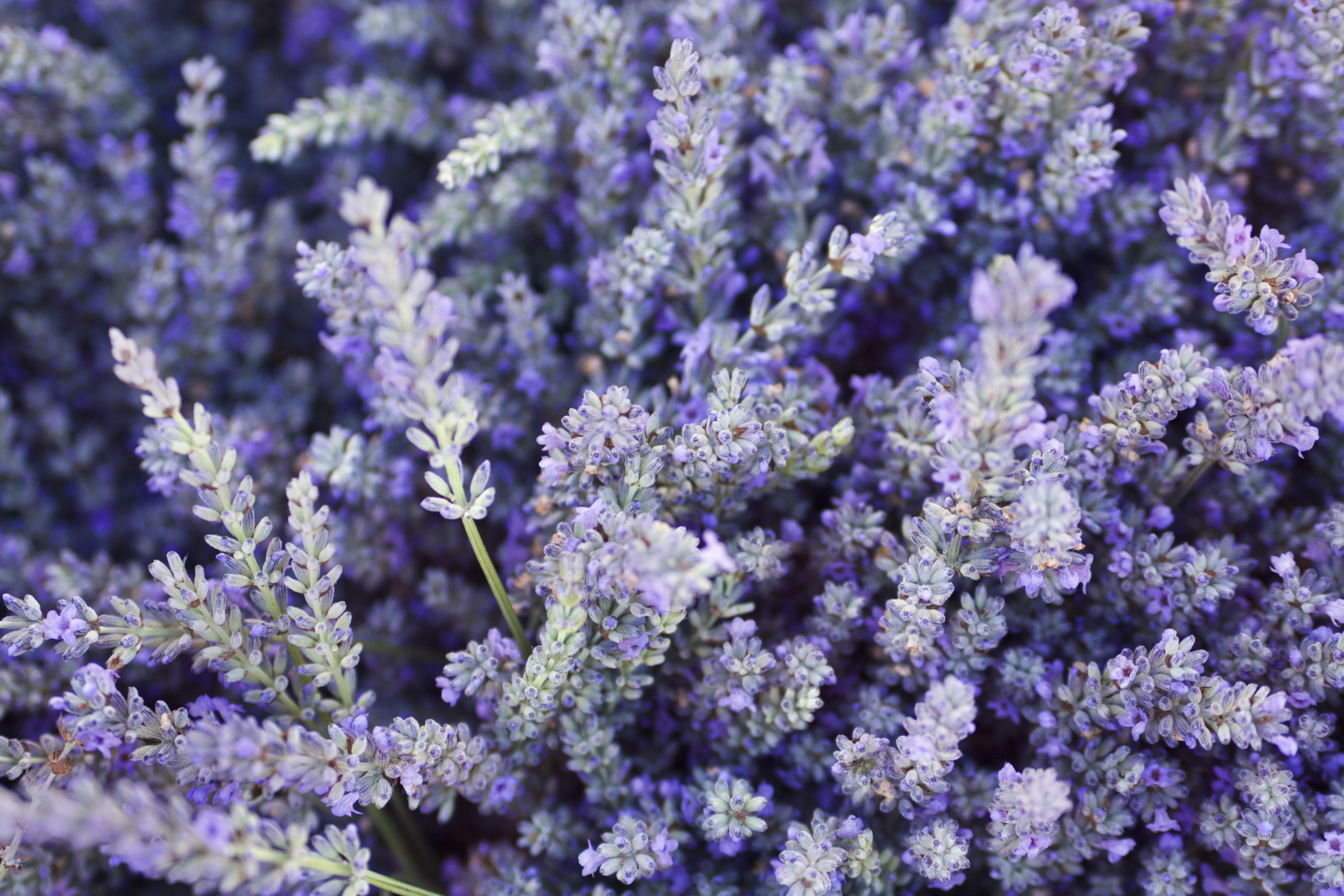
Who doesn’t want their garden to smell lovely? Lavender is a beautiful aromatic plant often used as a natural antiseptic and can be used on burns, insect bites, cuts and other skin irritations. The camphor in the oil is great for stress, sleep, headaches, tension and many other applications.
The resilient, durable lavender plant can grow in dry and windy weather conditions, making it a perfect choice for your rooftop. Lavender has gray-green foliage and grows up to 1.5 feet tall. You can grow these plants in a container or large rooftop garden bed.
3. Kousa Dogwood
Also known as Cornus Kousa, the Kousa Dogwood is another top choice for rooftop gardens. While technically a tree, these plants stay small and short. Dogwood trees are widely known for their delicate beauty, and the Kousa variety adds a toughness that makes this species an excellent choice for home landscapes and urban areas.
The tree also makes a visual contribution year-round. In spring, it produces a heavenly array of star-like blooms. In summer, its intriguing canopy of layered branches provides shade and beauty. In autumn, it offers spectacular bright red color. Even in winter, this tree has an appeal all its own with bark that resembles a jigsaw puzzle. These plants grow beautiful leaves that change colors through different seasons.
Many would mistake the leaves for petals, when they aren't petals at all. In spring, the modified leaves bloom in shades of pink and white colors. By summer, their foliage turns into deep green shades and finally in fall, a red and purple.
4. Single Seed Juniper
Officially known as Juniperus Squamata and popular as 'Blue Star,' single seed juniper is a thin, needle-shaped shrub with a silvery-blue cast. If you've ever traveled through the arid mountainous regions of the Southwest United States, you may have noticed dark shrubby conifers surrounding you. More than likely, you've found wild Juniperus Squamata, or the One Seed Juniper.
The juniper tree grows at a snail's pace on the surface, while its taproot digs deep to the depths in search of water. Adapted to handle the brutal desert climate, the juniper is can stop its growth when the little moisture is available, and begin growing again when water is available once again.
5. Fanal 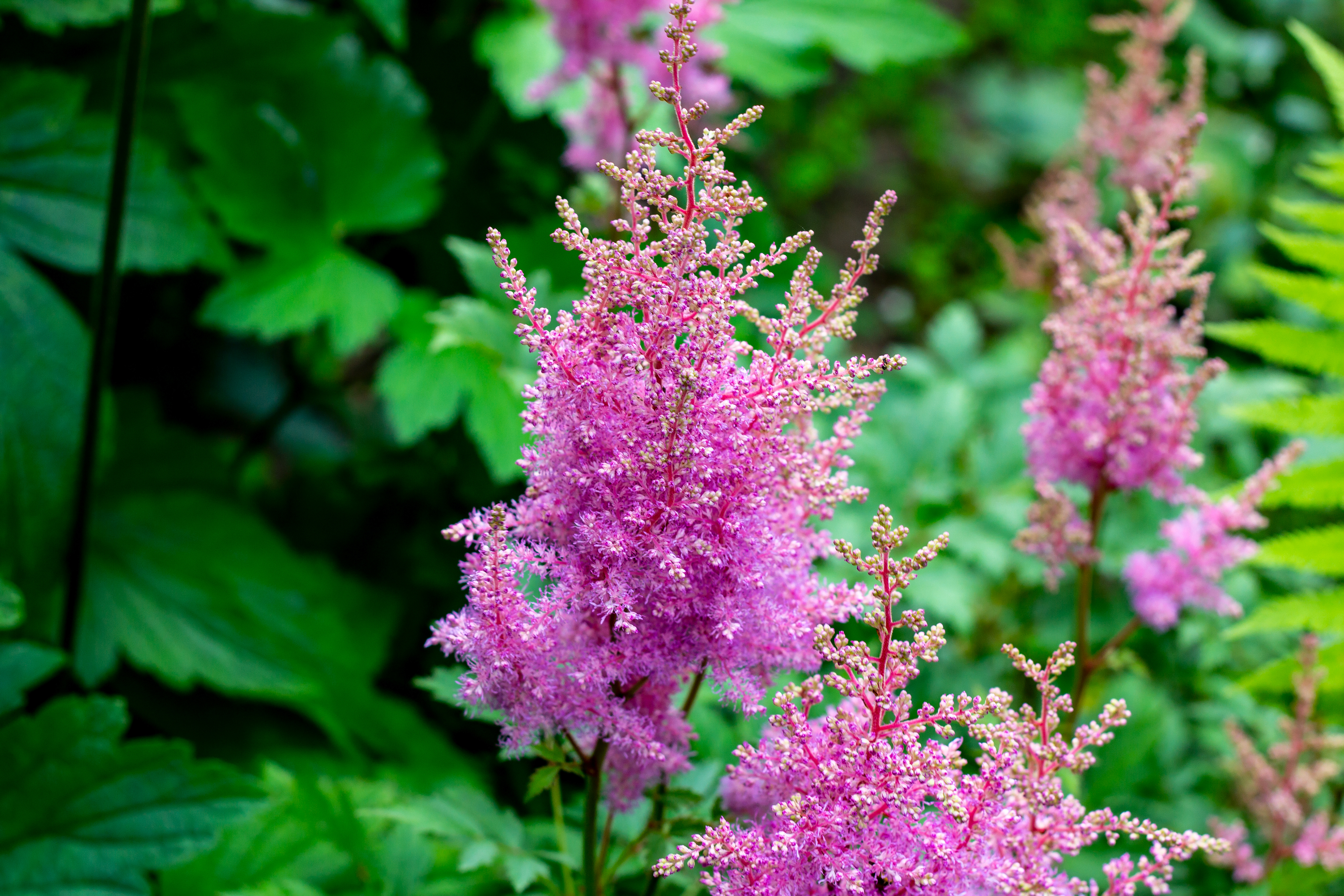
Another excellent option for the shady area of your roof is fanal plants. One of the most popular varieties, Astilbe 'Fanal', is a showy bloomer for beautiful summer color in shaded areas. Tall, feathery blooms of deep garnet-red valued for their light, airy quality rise above graceful mounds of bronze-green foliage.
Fanal's thrives in full shade borders. This plant has a beautiful and lush crimson color that blooms at its best during summer. The Astilbe 'Fanal' has shoots that grow as high as one and a half feet and are gorgeous in mass plantings. For best growth, these plants require moist soil and shade, so they don't dry out.
6. Daylily
The daylily is an amazingly low-maintenance (almost no maintenance) perennial—easy to grow, virtually disease- and pest-free, and able to survive drought, uneven sunlight, and poor soil. Plus, there are thousands of beautiful daylilies to choose from.
Combine early, mid-season, late blossoming varieties, and repeat bloomers to have daylilies in flower from late spring through the first frost of fall. They are very vibrant and colorful, which makes your garden look lively and fresh. We recommend growing Hemerocallis; it grows well under the sun and has a pinkish bloom. This type of daylily can grow up to 2 feet tall.
7. Dwarf Hinoki Cypress
Dwarf hinoki cypress grows in yellowish-green colors with unique-textured foliage. The fanlike foliage creates dense, deeply layered branches with tips that twist this way and that. These plants grow very slowly and reach a maximum height of 3 feet.
Although these plants are very low maintenance, they just require you to water them on a regular schedule. These plants add beauty and variety to your rooftop garden and can be grown in a shared container with other plants.
8. Ajuga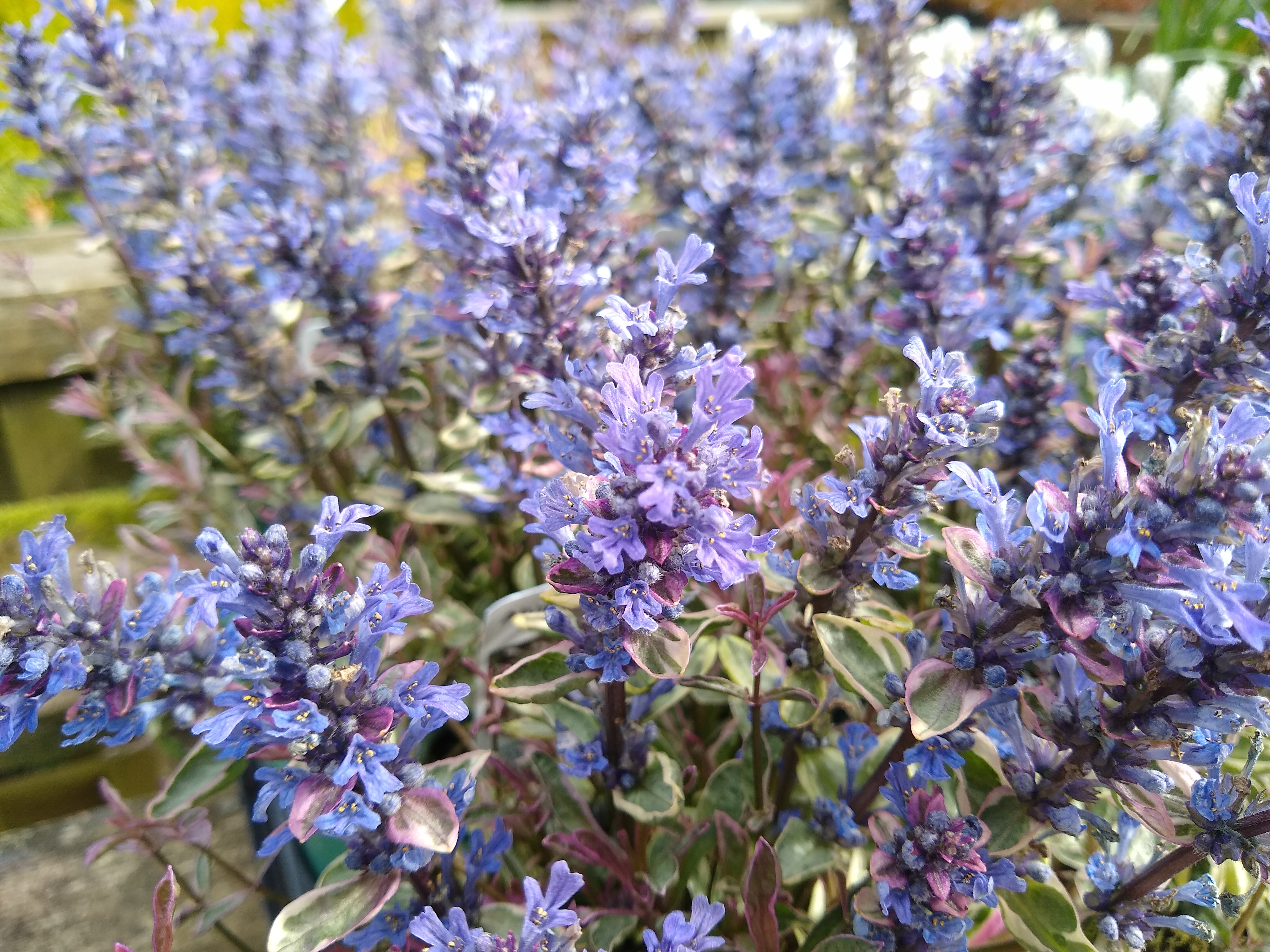
When you’re looking for something attractive to quickly fill in a large area, then you can’t go wrong with ajuga (Ajuga reptans), also known as carpet bugleweed. This creeping evergreen plant quickly fills in empty areas, adding exceptional foliage color and blooms. They are great at attracting butterflies and hummingbirds to your rooftop garden. These plants require a regular supply of water and shade to grow adequately.
The flowers of bugleweed are normally bluish to purple but they can be found in white as well, all options adding a pop of color to your garden. In addition to the traditional green foliage, this ground cover can also provide the landscape with stunning copper or purple-colored foliage too, making it great for adding year-round interest.
9. Lamb's-Ears
A favorite for growing with kids, the lamb’s ear plant is sure to please in nearly any garden setting. This easy-care perennial has velvety soft, wooly evergreen leaves that are silver to gray-green in color. The foliage is also similar in shape to that of a real lamb’s ears, hence its name.
If left to bloom in summer, lamb’s ear will produce spikes of pink to purple colored flowers too. Lamb’s ears are an excellent option for the front of a flower bed. Their distinct foliage is soft and light with silver-gray shades. Officially known as Stachys byzantine, they tend to spread on the ground; we recommend growing in containers for this reason.
10. Blue Fescue
Blue fescue is a beautiful ornamental grass requiring minimum maintenance and growing throughout the year. They are very versatile and can be grown in a border, inside containers, or as edging plants. Their dwarf size keeps them at an approximate height of 10 inches tall.
Outstanding, icy blue coloration, in combination with buff-colored plumes, create an eye-catching contrast. Blue fescue is drought tolerant when established, making it a great addition to your urban garden.
11. Japanese Wisteria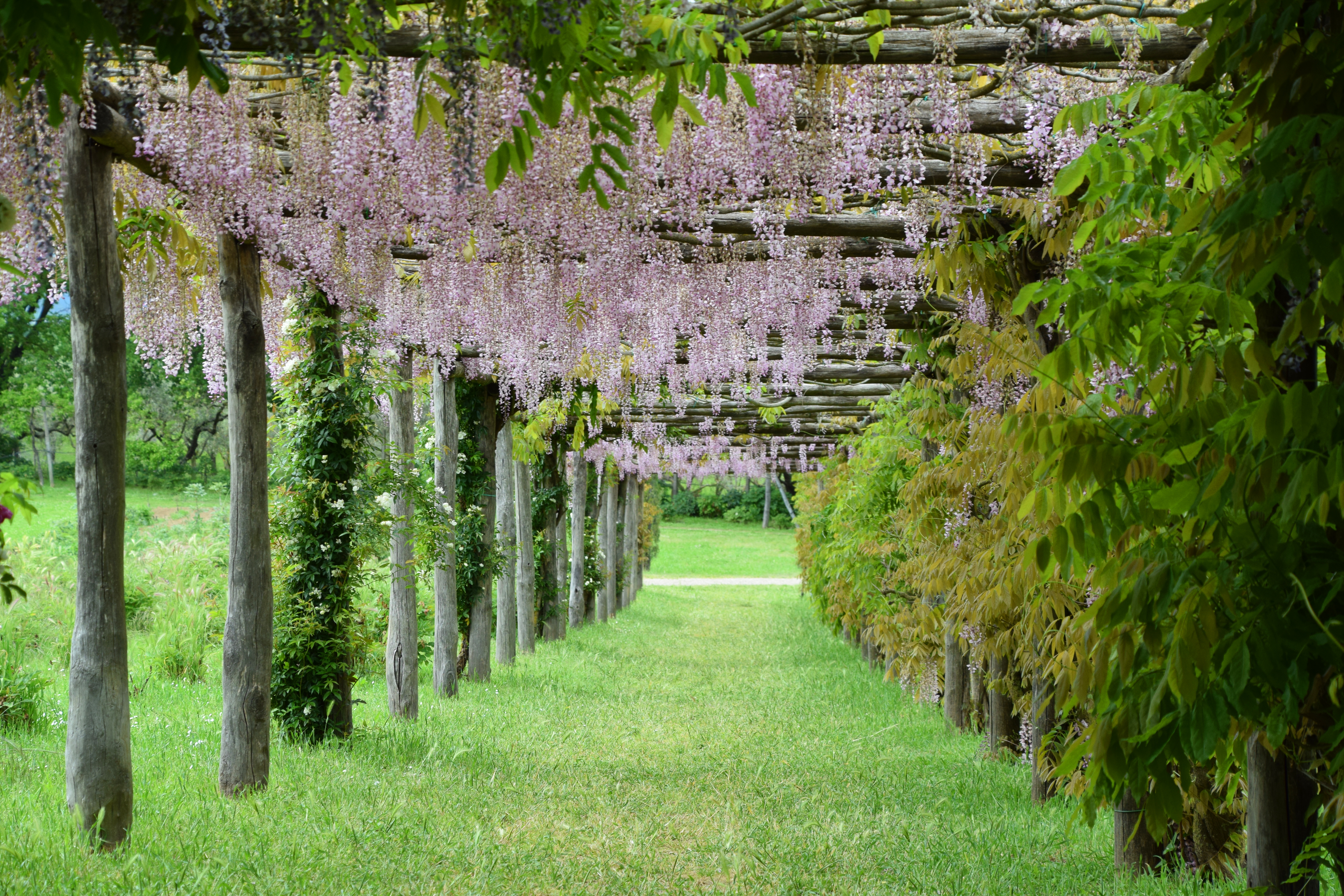
Japanese Wisteria is a beautiful climbing, woody vine with fragrant blooms. The bloom hangs like cherries on the vine, creating a cascade of flowers. These plants can bloom three times in the growing season and add tremendous beauty and fragrance to your rooftop garden.
Japanese wisteria is a very aggressive vine. Flowers bloom on new growth, making it extremely important to maintain the vine regularly. You will need to prune twice a year to manage both the size and to keep branches close to the main structure. Without the proper maintenance, the woody vine can become destructive, so it's important to keep up with the care of this plant. We recommend purchasing or creating a structure, like an arbor or a pergola, rather than letting wisteria climb on a house as its vine can easily destroy siding, gutters, etc. Despite being one of the most beautiful vines available, plant with caution and prune regularly to avoid damages.
Additional Questions for Urban Gardening?
A rooftop garden is an excellent use of your roof space. When thinking about a garden, do not be intimidated by a lack of space. This consideration of a small space does not equate to no ability to have a garden. It simply requires thinking outside the box. No matter what size area is available, rooftop gardening adds beauty and vibrancy to your outdoor space.
Visit a Grange Co-op near you to choose from our variety of plants ideal for rooftop gardening. Let a GrangeExpert assist you in the creation of a beautiful outdoor space.
